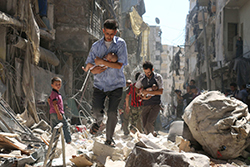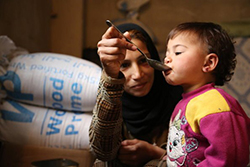Refugees are people who have to flee their homes in search of a better life. According to statistics, today their number has exceeded 25 million.
Refugees often have no choice but to flee their homes due to various factors beyond their control. More than 37,000 people are believed to be displaced every day by persecution and conflict.
To know how to help refugees, you must first understand why they are refugees. While the roots of today's refugee crisis vary from country to country, there are some common culprits.
Below is a list of the root causes of refugee crises and how they affect millions of people around the world.
1. Persecution
Persecution can take many forms, all leading to a refugee crisis. This includes persecution based on race, social status, religion or politics. This is by far the most common reason people leave their homes.
Religious exiles are everywhere, from the Dalai Lama to the persecution of Muslims in Myanmar. Some of these figures are staggering—more than 900,000 people have left Myanmar since 2017, for example.
2. War

Most refugees are those displaced directly or indirectly by conflict. The first major international refugee crisis occurred in the 20th century, when World War II displaced more than 50 million people. The Syrian refugee crisis started in 2011 and continues today.
More than 6.3 million people were internally displaced and more than 5 million people fled the country as a result.
According to official figures, UNHCR has registered 2 million Syrian refugees in Egypt, Jordan, Lebanon and Iraq, 3.5 million Syrian refugees with the Turkish government and more than 33,000 Syrian refugees in North Africa. They are followed by 2.7 million Afghans and 2.3 million Sudanese.
3. Climate change
According to the UNHCR, climate change has a decisive impact on the situation of refugees. In December 2018, the UN General Assembly addressed this growing problem. The report notes that climate change, environmental degradation and natural disasters are increasingly intertwined with the causes of refugee flows.
An estimated 16.1 million people have been displaced by climate change. Climate change has altered modern humanitarian needs, and organisations such as the United Nations are struggling to keep pace with changing needs. In fact, it cannot even serve as a formal reason for conversion.
4. Human rights violations
In many countries, people with money and power have grossly violated human rights. Greed, corruption and power are often used by those in power to carry out these actions. The most extreme forms of corruption lead to high unemployment and economic inequality. The poor in these countries are often exploited by the rich and powerful.
Global or internal displacement is the result of repeated human rights violations and situations that cause individuals to leave their place of birth. Regardless, refugees and the countries/cities that support them bear high economic and social costs.
Acknowledging such human rights violations is an important step in addressing the refugee problem.
5. Financial difficulties
Poverty exacerbates the global refugee plight. The Venezuelan refugee crisis is an example. More than 4 million people have fled Venezuela since 2015. In what was once Latin America's fastest-growing economy, more than 32 million people cannot buy groceries.
6. Hunger

The United Nations has described the global food situation as the worst since 1945. Worldwide, more than 20 million people are believed to be food insecure. The result is a widespread displacement and refugee crisis.
East Africa is home to 4 million refugees and another 11 million internally displaced people due to food shortages and lack of resources. Drought, corruption and political instability are common causes of resettlement from hunger.